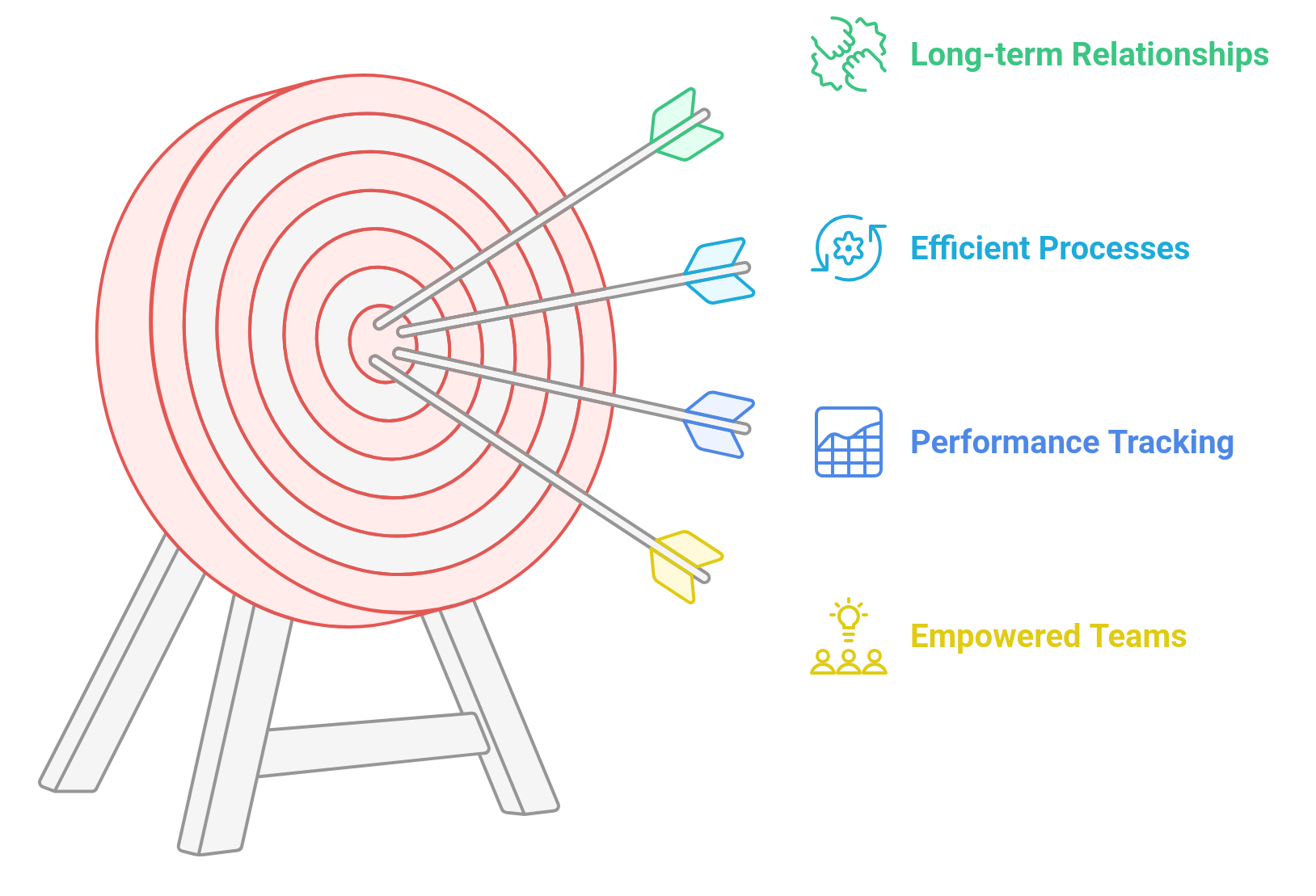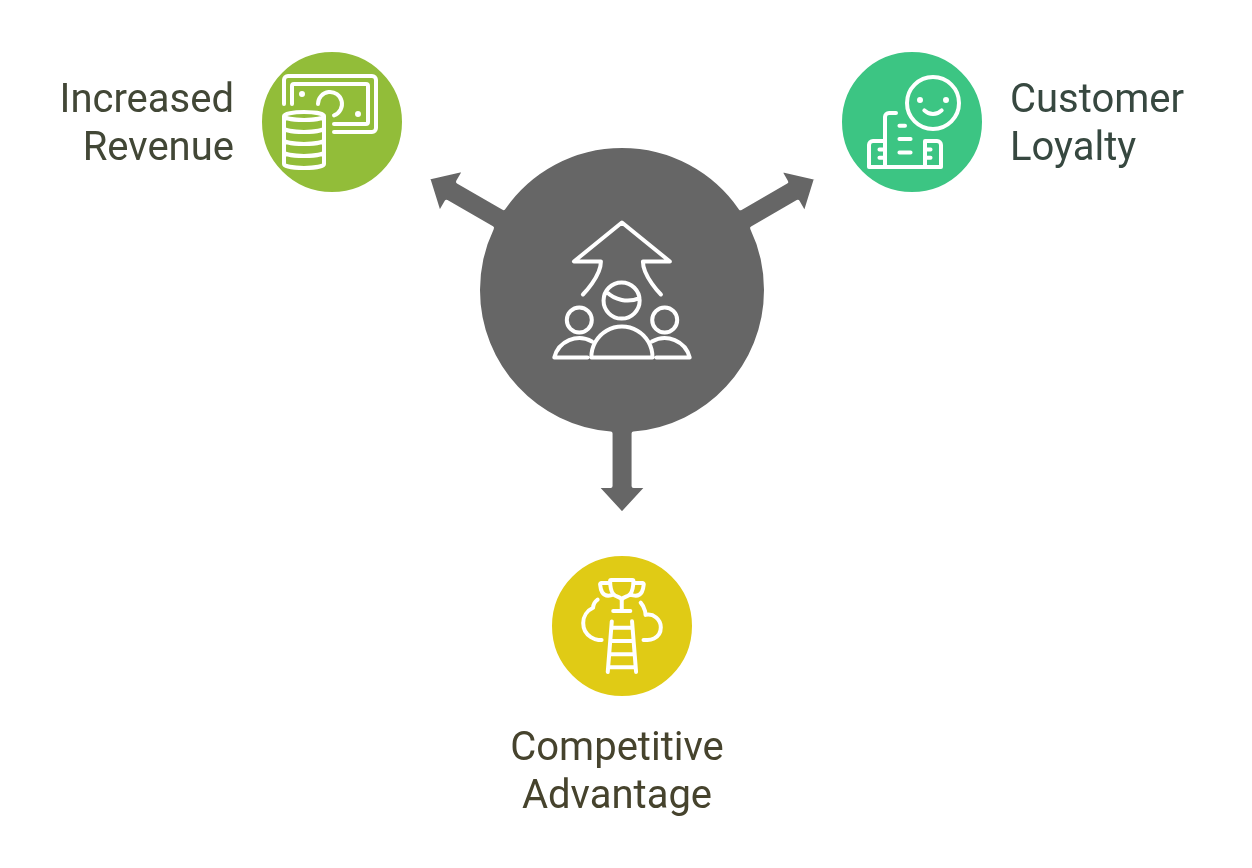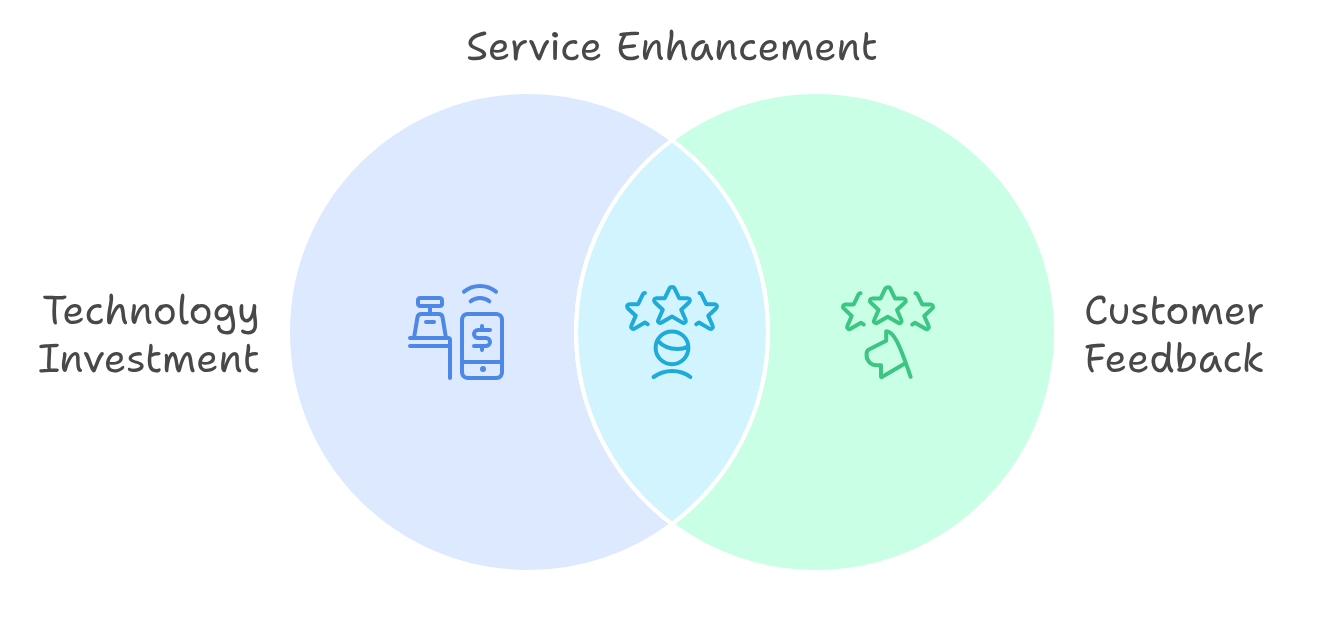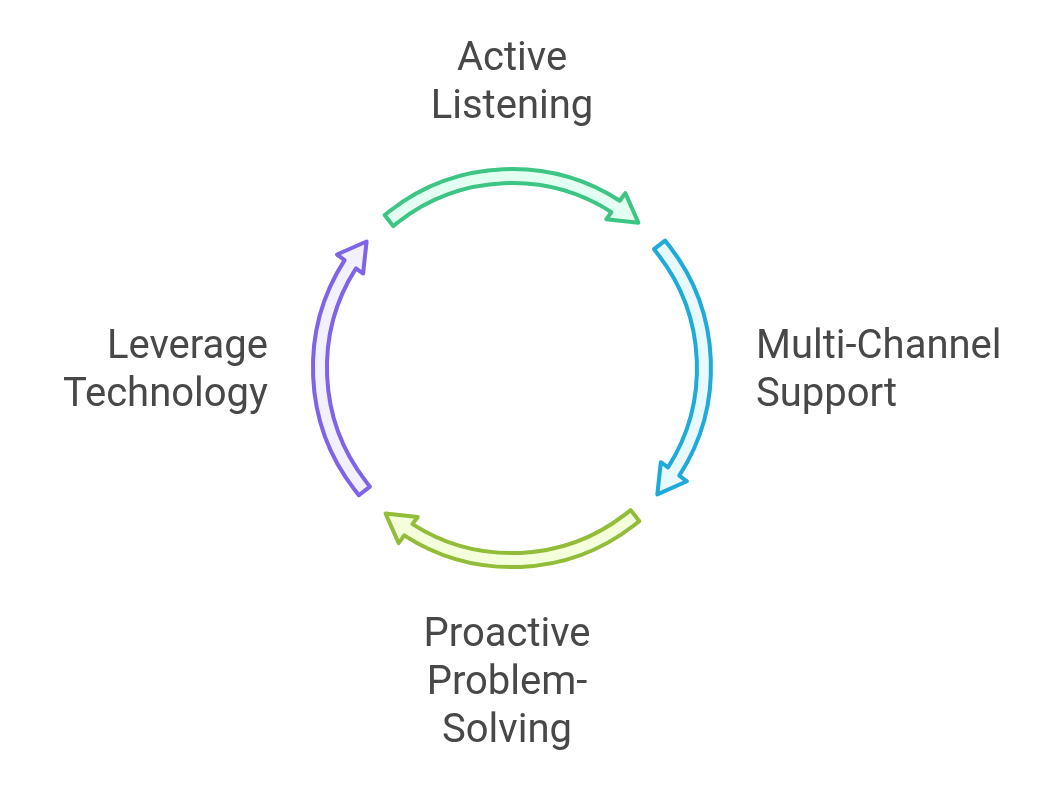In an era where customer satisfaction reigns supreme, the landscape of customer service is evolving at breakneck speed. Every interaction with a brand can either build loyalty or repel even the most devoted fans.
Customer Service Management (CSM) is not just a buzzword; it’s an essential element that drives business success and shapes customer experiences.
By embracing CSM, companies can turn fleeting transactions into lasting relationships, ensuring that each customer journey is as smooth and satisfying as possible.
This article delves into the core principles and strategies of Customer Service Management, exploring its significance, the differences from traditional CRM, and how to implement effective practices.
Together, we will uncover the components that can elevate customer service to extraordinary heights.
Table of Contents
What is Customer Service Management (CSM)?
Customer Service Management (CSM) is the heart and soul of fostering unparalleled customer satisfaction and loyalty.
It is a strategic approach focused on elevating service operations and building teams equipped to exceed customer expectations.
At its core, CSM utilizes cutting-edge customer service management software and an array of communication channels to seamlessly manage service requests and inquiries.
Key Components of CSM:

- Long-term Relationships: Effective CSM nurtures strong bonds across the entire customer lifecycle, ensuring that every interaction reinforces loyalty and trust.
- Efficient Processes: By optimizing service delivery, CSM ensures quicker resolutions to customer issues, enhancing positive customer experiences.
- Performance Tracking: Constantly evaluating key performance indicators allows teams to refine their problem-solving skills and deliver consistent, high-quality service.
- Empowered Teams: CSM empowers customer service representatives and agents to handle customer inquiries and complaints effectively, transforming challenges into opportunities for building customer loyalty.
Benefits of CSM:
| Advantages | Impact |
|---|---|
| Repeat Business | Drives customer retention |
| Brand Reputation | Maintains a positive image |
Implementing a robust CSM strategy is vital for maintaining strong relationships with satisfied customers, ultimately becoming a decisive competitive advantage in today’s market.
Why is Customer Service Management Important?
Customer Service Management (CSM) is the backbone of any successful business, serving as the gateway to customer loyalty and retention.
In today’s competitive marketplace, 96% of global consumers cite exceptional service as a key factor in their brand loyalty decisions. Effective CSM strategies are pivotal, focusing on enhancing customer interactions and exceeding customer expectations.
The importance of CSM cannot be overstated. It enables companies to forge strong relationships with customers by ensuring fast and easy access to customer data, which is critical for strategizing and tailoring experiences.
Continual improvement in CSM involves gathering and analyzing customer feedback, allowing businesses to adapt to changing preferences and market conditions swiftly.
Here’s why CSM is indispensable:

- Customer Loyalty: Effective management ensures satisfied customers who are likely to become loyal customers.
- Competitive Advantage: Exceptional service differentiates businesses from their competitors.
- Increased Revenue: Happy customers lead to repeat business and positive referrals.
In conclusion, investing in CSM is not just about solving customer complaints or inquiries; it’s about building a reputation for excellence.
By capitalizing on data and feedback, businesses can turn customer service into a powerful tool for growth and sustainability.
Differences Between CSM and Traditional Customer Relationship Management (CRM)
Customer Service Management (CSM) and Traditional Customer Relationship Management (CRM) serve distinct yet complementary roles in enhancing customer experiences and driving business success. While both are crucial, their primary focuses differ.
CSM emphasizes delivering exceptional service and elevating customer satisfaction. It involves collecting and analyzing data related to customer satisfaction, communication history, and service requests.
This approach ensures consistent, positive customer experiences, potentially boosting sales by 20% or more. The strategy revolves around understanding customer needs, preferences, and feedback, tailoring support and services to meet these expectations.
In contrast, CRM primarily targets optimizing sales and marketing efforts by leveraging data on customer purchasing history and lead management.
It is designed to streamline data-driven operations, focusing on long-term relationships and sales optimization.
| Feature | CSM | CRM |
|---|---|---|
| Objective | Enhance customer satisfaction | Optimize sales and marketing efforts |
| Data Focus | Customer satisfaction & service requests | Customer purchasing history & lead management |
| Core Strategy | Tailored services & support | Data-driven sales strategies |
| Impact on Sales | Boosts sales through positive experiences | Streamlines sales through lead optimization |
Effective CSM integrates systems and technologies to facilitate seamless communication and problem-solving, enhancing interactions at every touchpoint.
Understanding these differences is key to refining customer service strategies and ensuring an exceptional customer journey.
Key Components of Customer Service Management
Customer Service Management (CSM) is an intricate tapestry woven from strategies, practices, and cutting-edge technologies, all meticulously tailored to amplify customer interactions throughout the entire customer lifecycle.
At its heart, CSM thrives on the profound understanding of customer needs, preferences, and invaluable feedback. This understanding allows businesses to sculpt their service offerings, ensuring each interaction is not just a transaction but a memorable experience that resonates on a personal level.
Empathy, active listening, and robust problem-solving skills are not mere tools but the lifeblood of thriving customer service teams, empowering them to foster positive and lasting relationships with customers.
Aligning these skilled professionals with the right tools and processes is paramount to executing a successful customer service management strategy that cultivates long-term loyalty and trust.
Defining Service Goals
In the realm of CSM, the paramount objective is clear: to ensnare customer satisfaction by not merely meeting but delightfully exceeding customer needs and expectations. This is the golden thread that weaves through successful CSM strategies.
Achieving this involves efficiently resolving customer issues and quelling complaints by honing in on root causes and unleashing satisfactory solutions. It’s about crafting an experience so exceptional that it inspires loyal customers to return, time and again, while also enticing new potential advocates.
Continuous improvement of the customer experience is the heartbeat of effective CSM, achieved by diligently gathering feedback and rigorously analyzing customer data.
In parallel, optimizing various measures to enhance efficiency in supply chains and improve the quality of services is non-negotiable in this quest for excellence.
Mapping Customer Journeys
Mapping customer journeys is akin to unearthing treasure maps, where each plotted point is an opportunity to refine user experience.
Companies like Spotify excel by identifying these pivotal junctures, using customer feedback as a compass to navigate the complex terrains of customer loyalty and trust.
A well-defined customer journey transforms into a launchpad for optimized features, such as the impeccably tailored, personalized music recommendations.
Understanding customer needs and preferences is not just essential; it is transformative, allowing for services that elevate the overall customer experience to new heights. Consistently enhancing service quality across all interaction touchpoints is the hallmark of effective customer service management.
Utilizing Technology for Support
In the digital age, technology is the mighty engine driving effective customer service management. It automates diverse operations, enabling rapid service delivery and equipping teams to extend accurate solutions to a broader customer base.
Essential tools like Customer Relationship Management (CRM) software organize customer data, allowing for brilliantly personalized interactions and informed decision-making across teams. AI and automation act as the ever-watchful eyes, sifting through extensive datasets, generating timely reports, and seamlessly streamlining processes.
Implementing self-service options reduces the reliance on intensive human labor, empowering teams to adeptly manage larger volumes of customer interactions.
A meticulously chosen tech stack simplifies operational tasks and bolsters visibility in excellent customer support processes, significantly benefiting frontline agents who strive to deliver exemplary service daily.
Thus, Customer Service Management stands as a beacon, illuminating the way for businesses to transcend ordinary service confines and step boldly into realms of extraordinary customer loyalty and satisfaction.
Effective Customer Service Practices
Implementing a robust customer service management strategy is not just a choice; it’s the lifeblood of fostering customer loyalty and cementing an unrivaled brand reputation.
This strategy is the gateway to turning first-time buyers into raving fans and loyal customers who keep coming back. It involves everything from creating a seamless, delightful customer experience to ensuring that every interaction is handled with impeccable care.
Satisfied customers are the backbone of your business, and nurturing these relationships with customers requires a well-tuned orchestra of policies, technologies, and human interaction.
Training Teams for Success
To achieve excellence in customer service, we must equip our customer service teams with the right tools, training, and a supportive work environment.
A comprehensive training program focused on communication skills, product knowledge, and problem-solving not only prepares staff to tackle customer inquiries with confidence but also empowers them to provide solutions with empathy and understanding.
Key to training are role-playing scenarios which hone their abilities in empathy, active listening, and creative problem-solving.
When staff members feel supported and recognized for their efforts, they are motivated to provide top-notch service. This positive environment not only boosts employee satisfaction and retention but also translates into delivering unforgettable and meaningful customer experiences.
Leveraging Customer Feedback
Customer feedback serves as the compass guiding businesses towards better service and product innovations.
By proactively inviting and accepting feedback, companies show that they value their customer’s opinions and are committed to improvement. According to research, 77% of customers feel more favorable towards companies that actively seek their input.
Feedback tools enable businesses to collect and analyze data, providing a deeper understanding of customer satisfaction levels.
By maintaining a feedback loop, businesses can foster greater employee engagement and customer loyalty. This process is fundamental in identifying areas of improvement and aligning services with customer expectations, ultimately leading to happier, more loyal customers.
Employing AI for Personalized Interactions
Artificial Intelligence is revolutionizing customer service management, infusing it with empathy and a profound understanding of customer needs.
AI-powered solutions enhance customer satisfaction by personalizing interactions, interpreting customer inquiries swiftly, and proposing relevant solutions—effectively reducing churn risks and fostering long-term relationships.
Streamlining workflows and centralizing information through AI reduces customer frustration, as it minimizes the chances of being passed between agents.
AI’s ability to analyze vast amounts of data allows for a tailored approach, ensuring every interaction is personalized, efficient, and impactful.
This forward-thinking application of AI not only enhances customer satisfaction but reinforces customer loyalty, giving businesses a compelling competitive advantage.
In today’s fast-evolving market, successful customer service management means leveraging the right technologies, training talented teams, and continually adapting to exceed customer expectations.
A dynamic strategy enhances customer interactions, leading to extraordinary customer satisfaction and a robust, loyal customer base.
Case Studies of Successful Customer Service Management
In today’s competitive landscape, excelling in customer service management isn’t just optional—it’s essential for thriving. Companies that prioritize a positive customer experience see revenue increases of 4-8% over their competitors.
This remarkable growth underscores the financial benefits of effective customer service management strategies. But what does that success look like in action?
Consider Fooji, a company that revolutionized its customer service operations, achieving a staggering 99.92% ticket closure rate and slashing average ticket closure time by 99%. By implementing cutting-edge customer service management software, they not only enhanced efficiency but also contributed to greater customer satisfaction.
Other successful strategies include harnessing customer feedback through surveys. This practice enables businesses to finely tune their products, services, and marketing strategies, paving the way for satisfied, loyal customers.
These customers are more inclined to spend more and advocate for the brand within their social circles, driving increased profitability.
Key takeaways from these case studies:

- Investing in customer service technology boosts efficiency.
- Prioritizing customer feedback enhances service offerings.
- Focused strategies foster loyal and satisfied customers.
Ultimately, effective customer service management transforms customer interactions into opportunities, nurturing lifelong relationships.
Common Challenges in Customer Service Management
Navigating the waters of customer service management is no small feat, especially in an era where customer expectations continue to soar.
One of the most pressing challenges is dealing with angry customers. Customer service representatives must possess strong conflict-resolution skills to turn confrontations into constructive dialogues.
When emotions run high, patience becomes a hero, transforming potential pitfalls into opportunities for building trust.
Managing multiple customers simultaneously adds another layer of complexity. During peak times with high call volumes or surges in online inquiries, providing personalized attention can be quite daunting. Here, the challenge is to maintain quality without compromising on speed.
Success lies in balancing the art of multi-tasking with effective communication, ensuring each customer feels heard and valued.
Clear articulation of issues is not always a given. Customers often struggle to explain their problems succinctly, which can lead to mutual frustration.
Active listening and patience from service representatives become pivotal in extracting pertinent details to clarify and resolve issues effectively.
High customer expectations loom large, as service teams must deliver consistently across the entire customer journey.
Alignment in support strategies and resources is critical to meeting these expectations, thereby solidifying a competitive advantage in customer satisfaction.
Finally, poor communication can complicate problem resolution. To counteract this, organizations must implement streamlined systems that foster clear, efficient communication regarding customer issues, enhancing overall service effectiveness.
Handling Complaints Effectively
Handling complaints with poise is a cornerstone of customer service management. By analyzing customer data, including complaints and praises, organizations can refine their communication and tailor services to better meet customer needs.
Listening to customer feedback is indispensable; in fact, 92% of service professionals emphasize that nurturing customer relationships is crucial in the complaint resolution process.
There is a delicate balance between speed and quality in customer service. A significant 69% of representatives find this challenging, yet it is vital for effective complaint handling.
Implementing advanced strategies such as AI solutions can streamline the resolution of simple issues, leading to reduced hold times and faster service delivery.
Continuous service improvements, through tracking survey results and analyzing service quality metrics, are essential. These efforts not only enhance the customer experience during complaint resolution but also forge stronger eventual relationships, transforming complaints into a pathway to a positive customer experience.
Managing Customer Expectations
Managing customer expectations requires a strategic and proactive approach in customer service management. Strategic policies and resources are key to ensuring well-managed interactions, catering to increasingly sophisticated customer needs.
Exceptional customer service is a driving force behind customer loyalty. Research shows that 93% of customers are inclined to make repeat purchases from companies that excel in support, highlighting the deep connection between service quality and loyalty.
Customer service representatives are brand advocates, with 75% of companies recognizing their role. Customer support automation boosts efficiency, response times, and service quality.
Automation in customer service management enhances this dynamic by allowing teams to efficiently allocate resources, address critical customer issues swiftly, and elevate both response times and service quality.
A comprehensive customer service management strategy plays a crucial role in addressing customer inquiries and complaints. Such a strategy ensures that customer expectations are not only met but exceeded, ultimately cultivating an environment of trust and satisfaction that spans the entire customer lifecycle.
Handling Complaints Effectively
Handling customer complaints effectively is the heartbeat of Customer Service Management. This crucial process involves a deep dive into customer data—embracing both their grievances and positive experiences—to hone communication and deliver personalized service.
Listening to customer feedback is not just beneficial; it’s essential. A staggering 92% of service professionals stress the importance of nurturing relationships to resolve complaints successfully.
Balancing speed and quality is often a challenge, with 69% of representatives feeling the strain. This underscores the need for robust complaint-handling strategies.
Enter AI solutions, which streamline the resolution of simple issues, guiding customers swiftly to the resources they need, and sharply reducing hold times.
Continuous improvement is non-negotiable. Here’s what it involves:
- Tracking survey results to gauge customer satisfaction.
- Analyzing key performance indicators to unearth service quality insights.
- Implementing findings to enhance each customer interaction.
These steps are vital for deepening the understanding of customer experiences and ensuring satisfaction every step of the way. Handling complaints effectively isn’t just about resolving issues—it’s about crafting a positive customer experience that turns challenges into opportunities, fostering loyalty and long-lasting relationships.
Managing Customer Expectations
In the dynamic world of customer service, managing customer expectations is a pivotal component of effective customer service management. It requires a strategic orchestration of policies and resources, ensuring that every interaction is well-handled.
This strategic approach not only leads to happy customers but also fosters customer loyalty, with an overwhelming 93% of satisfied customers inclined to make repeat purchases when provided with exceptional support.
Customer service representatives play a critical role in this ecosystem, acting as brand advocates for 75% of companies. They are the front-liners in addressing customer inquiries and complaints, ensuring a positive customer experience.
This demands a robust customer service management strategy, which is essential for resolving customer issues efficiently.
Automation emerges as a key player, allowing customer service teams to allocate resources effectively, thus enhancing response times and service quality. Here’s how automation helps:
- Faster response to customer inquiries
- Efficient problem-solving skills deployment
- Improved tracking of key performance indicators
With a comprehensive strategy and the right tools, maintaining strong relationships with customers is achievable, turning customer interactions into opportunities for exceeding customer expectations. This, in turn, provides a competitive advantage and cultivates a loyal customer base throughout the entire customer lifecycle.
Strategies for Continuous Improvement in CSM
Continuous improvement in Customer Service Management (CSM) is crucial for maintaining high customer satisfaction and loyalty. Implementing effective CSM strategies can elevate brand reputation and enhance customer relationships. Here’s how:

- Active Listening and Empathy: Understand and address customer needs by actively listening and showing empathy. This approach ensures that concerns are acknowledged promptly.
- Multi-Channel Support: Offer support through various channels like phone, email, live chat, and social media to meet customer preferences and enhance accessibility.
- Proactive Problem-Solving: Tackle issues before they escalate by anticipating problems. This proactive approach not only increases customer satisfaction but also minimizes churn.
- Leverage Technology: Use customer service management software to track performance and resolve customer inquiries efficiently.
Key Benefits:
| Strategy | Benefit |
|---|---|
| Active Listening and Empathy | Better understanding of customer needs |
| Multi-Channel Support | Easier access for diverse preferences |
| Proactive Problem-Solving | Enhanced loyalty and reduced churn |
By focusing on these strategies, businesses can ensure a positive customer experience and build strong, loyal relationships throughout the entire customer lifecycle.
Establishing a Comprehensive Customer Service Management Strategy
Establishing a Comprehensive Customer Service Management Strategy is crucial for businesses aspiring to transform their customer interactions into exceptional experiences.
This strategic approach focuses on understanding customer needs, preferences, and feedback, shaping services that not only meet but exceed customer expectations. Implementing a well-rounded strategy involves several key elements:
- Equipping Teams: Ensure customer service teams are empowered with the right tools, training, and support. This enables them to deliver excellence consistently.
- Aligning Staff and Tools: Match skilled customer service representatives with appropriate internal or external tools and processes that foster a collective mission.
- Gaining Insights: Leverage customer feedback to continuously refine products, services, and marketing efforts, heightening both customer satisfaction and loyalty.
- Tracking Performance: Utilize key performance indicators (KPIs) and customer support tools to monitor and enhance service efficacy across the entire customer lifecycle.
By cultivating strong relationships with customers, businesses not only create a competitive advantage but also nurture a loyal customer base. The success of this strategy lies in its ability to adapt and evolve, ensuring Happy customers and offering a continued positive customer experience.
Wrapping Up!
Customer Service Management is the lifeblood of any thriving business, seamlessly orchestrating customer interactions and ensuring positive experiences throughout the entire customer lifecycle.
At its heart, this management strategy is about building and nurturing strong relationships with customers, transforming them into loyal patrons and advocates.
Ultimately, mastering customer service management presents a significant competitive advantage. It propels businesses to track performance effectively, surpass key performance indicators, and generate not just satisfied customers, but happy customers who consistently return.
This committed focus on customer satisfaction is vital for sustaining a successful, customer-centric business in today’s competitive landscape.





